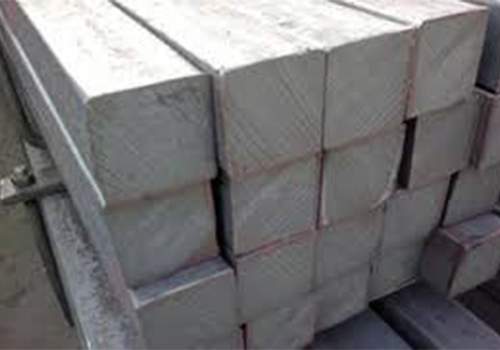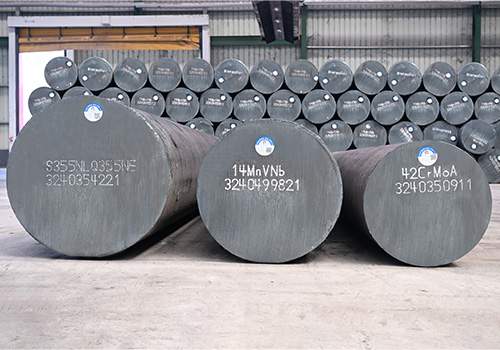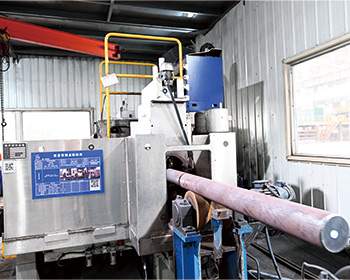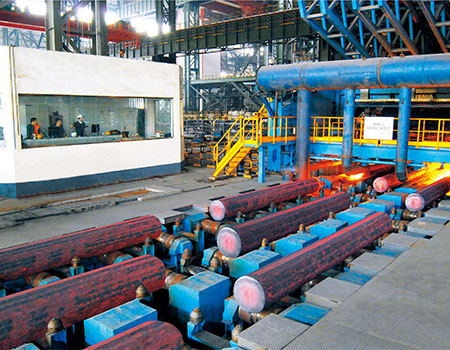
Understanding the Properties of 1020 Carbon Steel
Table of Contents
Introduction

When it comes to carbon steel, there are various grades and compositions available for different applications. One such grade is 1020 carbon steel, which is widely used in industries like manufacturing, automotive, and construction. Known for its moderate strength, excellent machinability, and ease of welding, 1020 carbon steel offers a balanced combination of properties suitable for many projects. This blog delves deep into the characteristics of 1020 carbon steel, how it compares to other grades, and why it is often the material of choice in many industrial applications.
What is 1020 Carbon Steel?
1020 carbon steel is a low-carbon steel that contains approximately 0.20% carbon content. The “1020” designation is derived from the American Iron and Steel Institute (AISI) code, where the first two digits represent the alloy type (carbon steel), and the last two digits indicate the carbon content, which is 0.20%. This steel is part of the general-purpose carbon steel category and is commonly used in applications that do not require high strength or toughness but need good machinability and formability.
Unlike medium and high-carbon steels, 1020 carbon steel is relatively soft, which makes it easier to shape and machine. This steel is widely used in various industries for products such as shafts, gears, and bolts, and is a popular material for mild steel applications.
Key Properties of 1020 Carbon Steel


Chemical Composition
The primary component of 1020 carbon steel is iron, but it also contains small amounts of other elements that affect its overall properties. The key elements in 1020 carbon steel include:
- Carbon (0.18-0.23%): The carbon content provides hardness and strength to the material.
- Manganese (0.30-0.60%): Manganese improves toughness and hardenability.
- Phosphorus (Max 0.04%): Phosphorus can increase the strength of the steel but may reduce its ductility.
- Sulfur (Max 0.05%): Sulfur can make the steel more brittle, but it is usually kept to a low percentage in 1020 carbon steel to prevent quality issues.
Mechanical Properties
1020 carbon steel is known for its moderate mechanical properties. It offers a good balance between strength and ductility. Some key mechanical properties include:
- Tensile Strength: Around 400-500 MPa (58,000-72,000 psi).
- Yield Strength: Approximately 250 MPa (36,000 psi), making it strong enough for a wide variety of uses.
- Hardness: Typically, 1020 carbon steel has a Rockwell B hardness of about 70-85.
- Elongation: This material has good elongation, which means it can be stretched without breaking.
These properties make 1020 carbon steel a preferred material for parts that need to be machined and shaped but do not require excessive strength.
Weldability and Machinability
One of the standout features of 1020 carbon steel is its excellent weldability and machinability. With relatively low carbon content, it is easier to weld compared to higher carbon steels. It can be welded using various welding techniques, including MIG and TIG welding. Additionally, 1020 carbon steel can be easily machined into various shapes without the need for advanced tooling.
However, as with any steel, proper welding procedures must be followed to avoid warping or cracking, especially in thicker sections.
Corrosion Resistance
While 1020 carbon steel does not have the corrosion resistance of stainless steel or other alloys, it does offer a certain level of protection against corrosion in mild environments. For applications exposed to moisture or corrosive elements, 1020 carbon steel may require a protective coating, such as painting or galvanizing, to improve its resistance to rust.
Applications of 1020 Carbon Steel
Due to its balanced mechanical properties, 1020 carbon steel is used in a wide range of applications, especially in industries that require components with good machinability and formability. Some common uses of 1020 carbon steel include:
- Automotive: Parts such as gears, axles, and shafts.
- Manufacturing: Machine parts, bolts, and screws.
- Construction: Structural components like beams and plates.
- Tools and Dies: It can be used for making tooling and other machinery parts due to its good machinability.
It is particularly favored in situations where strength is not the primary concern but machinability and ease of fabrication are essential.
Table: Properties Comparison of 1020 Carbon Steel with Other Common Carbon Steel Grades
| Property | 1020 Carbon Steel | 1018 Carbon Steel | 1045 Carbon Steel |
|---|---|---|---|
| Carbon Content | 0.18 – 0.23% | 0.15 – 0.20% | 0.43 – 0.50% |
| Tensile Strength | 400-500 MPa | 440-700 MPa | 620-850 MPa |
| Yield Strength | 250 MPa | 370 MPa | 440 MPa |
| Hardness | 70-85 Rockwell B | 70-85 Rockwell B | 90-120 Rockwell B |
| Machinability | Excellent | Excellent | Good |
| Weldability | Good | Excellent | Fair |
| Corrosion Resistance | Low | Low | Low |
| Ductility | Moderate | Moderate | Low |
This table provides a side-by-side comparison of 1020 carbon steel with other common grades such as 1018 carbon steel and 1045 carbon steel, allowing you to assess the differences in mechanical properties, machinability, and other key aspects.
Advantages and Disadvantages of 1020 Carbon Steel

Advantages:
- Cost-Effective: 1020 carbon steel is more affordable compared to higher carbon steels and alloys, making it a cost-effective choice for many applications.
- Good for Machining: Its excellent machinability makes it ideal for manufacturing parts that require precise machining.
- Ease of Fabrication: The material’s softness allows for easy fabrication, welding, and forming into various shapes.
Disadvantages:
- Limited Strength: While it is strong for many applications, it lacks the high strength of higher-carbon steels or alloyed steels.
- Corrosion Susceptibility: Like most carbon steels, it is prone to rust and requires coating or treatment in some environments.
- Not Suitable for Heavy Load-Bearing Applications: For tasks requiring high tensile strength, a higher-grade steel would be more appropriate.
How to Select the Right Carbon Steel for Your Project
Choosing the right type of carbon steel depends on various factors, including the strength, hardness, and environmental conditions the material will face. Here are some considerations to keep in mind when selecting 1020 carbon steel for your project:
- Application Type: Determine if the application requires high strength or toughness. If not, 1020 carbon steel may be the right choice due to its excellent machinability and ease of fabrication.
- Corrosion Exposure: If the steel will be exposed to harsh environmental conditions, consider using coatings or upgrading to a material with better corrosion resistance, like stainless steel.
- Budget Considerations: For cost-sensitive applications, 1020 carbon steel is an affordable choice while still offering adequate performance for general-purpose use.
Conclusion
1020 carbon steel is a versatile and widely used material in various industries due to its balanced properties, including good machinability, moderate strength, and ease of welding. While it may not be the best choice for high-strength or heavily loaded applications, it is an ideal material for projects where cost-efficiency and ease of fabrication are key. By understanding the properties of 1020 carbon steel, manufacturers and engineers can make informed decisions that optimize performance and reduce costs.
FAQ
What is the carbon content of 1020 carbon steel?
1020 carbon steel has a carbon content between 0.18% and 0.23%, making it a low-carbon steel suitable for applications where strength is important but not critical.
Can 1020 carbon steel be welded?
Yes, 1020 carbon steel has excellent weldability, making it ideal for welding in many industrial applications.
How does 1020 carbon steel compare to other carbon steels?
Compared to higher-carbon steels like 1045, 1020 carbon steel has lower strength but is easier to machine and fabricate. It is ideal for applications that do not require extreme strength.
Is 1020 carbon steel corrosion-resistant?
1020 carbon steel has low corrosion resistance and may require a protective coating to prevent rust in environments where it is exposed to moisture or corrosive elements.
What industries use 1020 carbon steel?
1020 carbon steel is used in various industries, including automotive, manufacturing, construction, and tool-making, for components like gears, shafts, and machine parts.
Can 1020 carbon steel be heat treated?
Yes, 1020 carbon steel can be heat-treated to increase its hardness, though its strength remains lower compared to other high-carbon steels after treatment.






